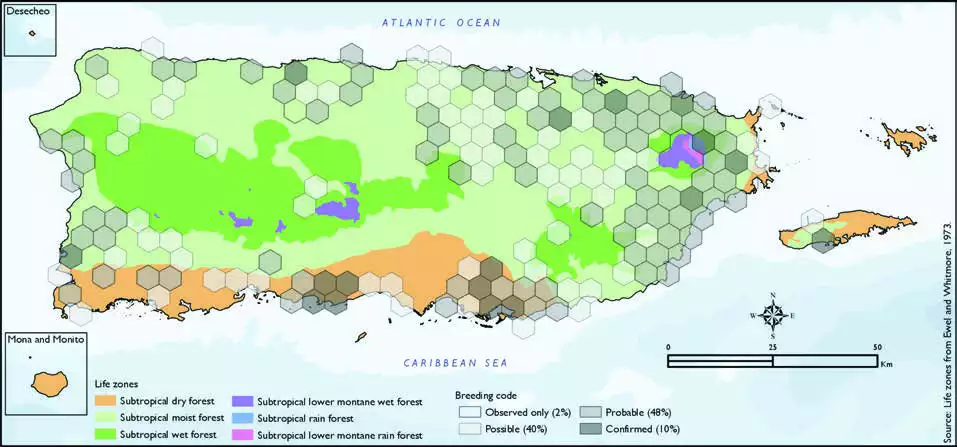Pin-tailed Whydah
Description
The pin-tailed whydah (Vidua macroura) is a small songbird with a conspicuous pennant-like tail in breeding males. It is a resident breeding bird in most of Africa south of the Sahara Desert.
The pin-tailed whydah is 12–13 cm in length, although the breeding male's tail adds another 20 cm to this. The adult male has a black back and crown, and a very long black tail. The wings are dark brown with white patches, and the underparts and the head, apart from the crown, are white. The bill is bright red. The female and non-breeding male have streaked brown upperparts, whitish underparts with buff flanks, and a buff and black face pattern. They lack the long tail extension, but retain the red bill. Immature birds are like the female but plainer and with a greyish bill.
Distribution & Habitat
The Pin-tailed Whydah is native to Sub-Saharan Africa and was
introduced to Puerto Rico where
it was first recorded in 1971
(Raffaele and Kepler 1992). In
Puerto Rico, it is most common
in the lowlands and can be
regularly seen in the grassy
fields and fence lines near La
Parguera in the municipality
of Lajas (Oberle 2018). It also
occurs on Vieques, where it is
a fairly recent arrival (Gemmill
2015). This species habitat
includes mostly grasslands,
lawns (Oberle 2018), and fields
with short grasses (Raffaele and
others 1998). The atlas fieldwork
yielded a total of 281 records
within 168 hexagons or 35
percent of the 479 total hexagons
(see map). Of the 168 hexagons where this species was found,
breeding met the atlas definition
of confirmed in 10 percent (17)
of the hexagons, probable in 48
percent (80), and possible in 40
percent (68), while the species
was observed in 2 percent (3)
of the hexagons but without
evidence of breeding (see map). Pin-tailed Whydah distribution. The map shows the highest breeding code by hexagon and overlaying the ecological life zones in
Puerto Rico. Note: percentages may not total 100 due to rounding.

Breeding Habits
Previously published reports indicate that the Pin-tailed
Whydah breeds from April
through November, and it does
not build a nest; rather, the
female lays her eggs in the nests
of other birds, especially waxbills
and other nonnative finches
(Oberle 2018, Raffaele and others
1998). Atlas results show that
this species breeding season 237Pin-tailed Whydah/Viuda Colicintaextends throughout the year, with the most breeding activity
from May to July (see chart). The
breeding activity peaks in June,
and it mostly takes place in the
subtropical moist forest life zone
(see chart). Results show that this
species breeds mostly within the
subtropical moist forest life zone
(72 percent of the hexagons)
(see table). It also breeds in the
coastal plains of the subtropical
dry forest life zone (21 percent
of the hexagons) and at higher
elevations within subtropical wet
and subtropical rain forest life
zones as well (7 and 1 percent of
the hexagons, respectively) (see
table and map).
Conservation
The global population size of the Pin-tailed Whydah has not
been quantified or assessed,
but the species is described
as uncommon (Borrow and
Demey 2001), and due to
the lack of evidence for any
declines or substantial threats,
the current population trend is
suspected to be stable. This
species is currently listed as a
species of least concern by the
IUCN (BirdLife International
2018). After Hurricanes Irma
and María in September 2017,
the whydah population declined
in the Fajardo Christmas Bird Count (Wunderle, Jr. 2017) in
the northeast portion of the
island and elsewhere, but it
has since been found in large
groups in the southwest portion
of the island (J.A. Salguero-
Faría, personal observation
2009). Locally, this species is not
listed in any of the threatened
categories of PRDNER and
USFWS. In Puerto Rico, the Pin-
tailed Whydah has a protected
habitat in land of 10 percent or
385 km2 of the total area covered by the hexagons where evidence
of breeding was found for this
species (3943 km2).
Related Species
Family:
whydah